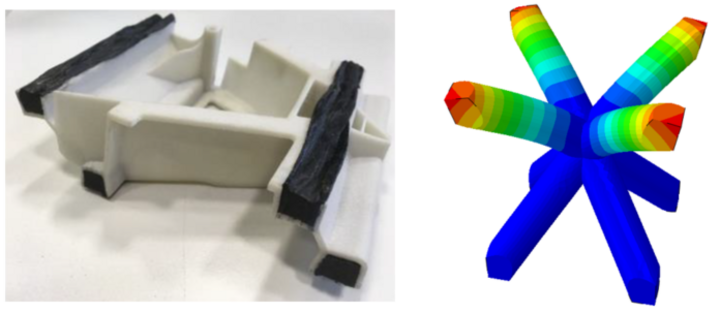Rapidskelett – CFRP skeleton construction through additive manufacturing
The project aims the development of fast and cost effective hybrid technology to produce and optimize carbon reinforced plastic lightweight structural components with the help of additive manufacturing.
Project Partners
BMW Group, H&S Maschinenbau GmbH & Co KG, P+Z Engineering GmbH, SGL Carbon GmbH, Fraunhofer-Einrichtung für Gießerei- Composite- und Verarbeitungstechnik, Altair Engineering GmbH, Dassault Systèmes Deutschland GmbH, Lebmeier Konstruktionen
Duration
01.09.2019 – 31.12.2022
Funding authority
Bavarian Ministry of Economic Affairs, Regional Development and Energy
Motivation
Lightweight design is an important objective in car body design, due to its influence on cost, fuel consumption, and carbon-dioxide emission. The already completed multiskelett project achieved results in the topic of technology development for carbon reinforced injection molded plastic skeleton design. The project of rapidskelett has the ultimate goal to be able to substitute the injection molding with additive manufacturing based thermoplastic fabrication. This would allow fast prototyping, as well as huge design freedom due to the limited manufacturing constraints of the 3D printing technology. Therefore, the lightweight and structural performance potential of this innovative technology is significant.

Method
Our research goal is to develop a framework to analyze the mechanical responses of additively manufactured periodic lattice structures. With the help of a robust FEM platform, design optimization of lattice structures will be possible to find the best performing and lightest lattice topology for different structural requirements. In order to achieve this target, certain modelling challenges have to be overcome. Within this project, our institution works on a framework to homogenize elastic and plastic structural responses of 3D-printed unit cells. The design optimization and structural evaluation of different types of lattice topology is also under our scope.
